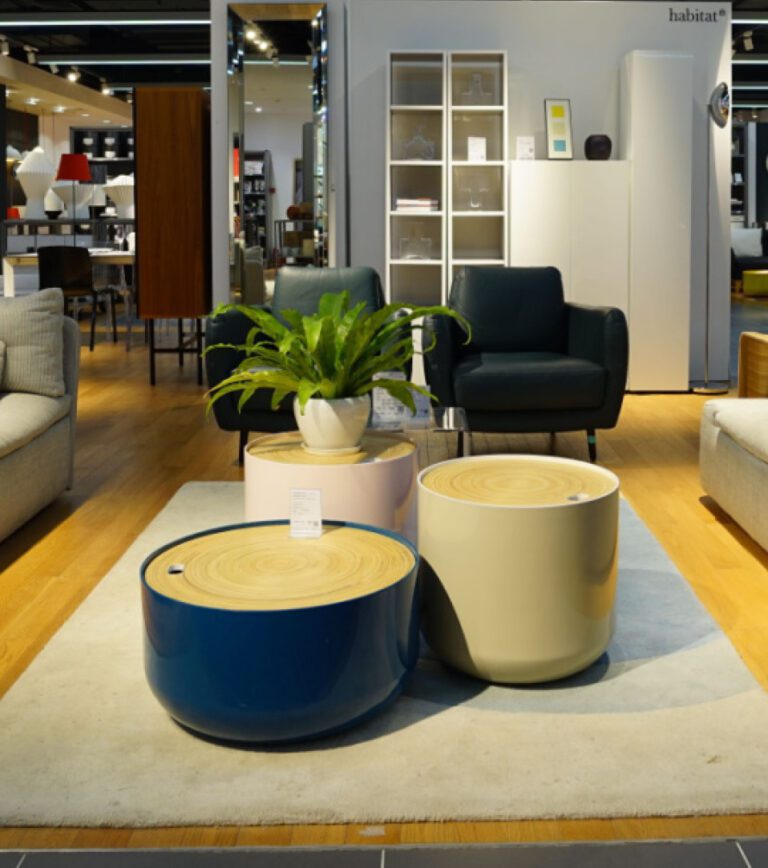Retail marketing in 2025 and beyond will be defined by a simple truth: brands that fail to align with evolving technology and customer expectations will fall behind. To thrive, retail marketers must proactively adopt strategies that blend personalization, immersive experiences, and ethical practices. Below are the top trends shaping the future of retail marketing, along with actionable strategies that brands must embed into their core operations.
1. Hyper-Personalization with AI and Data
Consumers want to feel deeply understood by brands. Therefore, hyper-personalization will be manifested across all touchpoints. To create truly individualized customer experiences, brands must prioritize investments in predictive analytics and machine learning. Immersive technologies like AR and VR will let customers “try before they buy,” making personalization a visceral experience. If your brand isn’t leveraging AI for deep personalization, you’re missing the foundational layer of future retail.
AI-Powered Recommendations: AI-powered systems running on real-time customer data will provide customers with personalized product recommendations.
Dynamic Content: Websites, emails, and apps will show dynamic content that changes based on a user’s preferences and behaviors.
AR/VR Shopping Experiences: Immersive tech will let customers “try before they buy” virtually everything from furniture placement to fashion.
2. Phygital Retail Experiences
The amalgamation of physical and digital, better known as “phygital,” will rule retail commerce. Standing out requires retailers to create physical locations that double as digital hubs. Smart stores will incorporate interactive kiosks, QR code scanning, and cashier-less checkouts, ensuring convenience drives in-store visits. Unified inventory systems will bridge the gap between online and offline shopping. Experiential retail, through pop-ups, live demos, and immersive displays, will become your brand’s competitive edge. Retailers must engineer these phygital experiences now or risk irrelevance.
Smart Stores: Technologies like interactive kiosks, QR codes for instant information, and cashier-less checkouts will enable in-store experiences.
Unified Inventory Systems: Seamless transitions can be expected between online and in-store transactions, such as ordering online and picking up in-store (BOPIS).
Experiential Retail: Flagship stores will focus on experiences, pop-up events, live demonstrations, and interactive displays to drive foot traffic.
3. Social Commerce Growth
Social commerce, or shopping directly through social platforms, will only continue to grow as platforms such as Instagram, TikTok, and Pinterest make the experience seamless. Brands must strategically amplify their social media ecosystems and test interactive formats. Shoppable live streams and authentic micro-influencer campaigns will redefine how consumers engage with products in real time. AI-generated content will help brands stay on trend and scale creative production effortlessly. Those who lag in social commerce innovation will lose visibility where it matters most.
Shoppable Live Streams: It would be everything if influencers and brands ran live sales events to show products in real time.
Micro-Influencers for Niche Audiences: Smaller, highly engaged influencer networks continue to drive conversions by telling authentic stories.
AI-Created Content: Brands utilize generative AI tools to create rapid, on-trend content catering to platform-specific audiences.
Strategic Takeaway: Amplify your social platforms and test interactive formats such as livestreams and AR filters.
4. Sustainability and Ethics in Marketing
Consumers, especially Gen Z and Millennials, are charging a premium for the sustainability and ethics of the brand. Sustainability is no longer a “nice-to-have”; it’s a strategic imperative. Brands that integrate sustainability into product design and messaging will build trust and command loyalty, particularly among Gen Z and Millennials. Eco-friendly packaging, transparent supply chains, and circular economic initiatives like trade-in or rental programs will be key differentiators. In a saturated marketplace, sustainability isn’t just a value; it’s a unique selling proposition that resonates deeply with conscious consumers.
Eco-Friendly Packaging: Highlight your direction to sustainability using recyclable or reusable packaging.
Supply Chain Transparency: Provide clear, easily accessible information about sourcing and production processes.
Circular Economy: Provide trade-in, repair, or rental programs that keep products in use longer.
5. Voice and Visual Search
Smart assistants and visual search tools will dramatically alter the way customers discover products. Expanding SEO strategies to include voice and visual search optimization is now crucial. As smart assistants and visual search tools become standard shopping aids, brands must ensure their product data is voice-query friendly and their visuals are AI-readable. Shoppers will increasingly find products through a photo snap or a spoken query, and retailers that ignore these search modalities will fade from consumer radar.
Voice Search Optimization: Ensure product descriptions are friendly to voice queries like “Where can I find vegan sneakers?
Visual Search Capabilities: With more Google Lenses and Pinterest Lenses, there will be a need for visual shopping, where product images should be clear, optimized, and AI-readable.
6. Retail Media Networks
Brands will increasingly leverage first-party data by creating their retail media networks. Retailers must establish a robust retail media strategy or collaborate with existing giants like Walmart Connect and Target Roundel. As brands seek to leverage first-party data for precision targeting, owning media spaces becomes a lucrative revenue stream. Co-branded campaigns on retailer-owned platforms will deliver unmatched targeting accuracy and ROI. The future of retail advertising lies in creating (or accessing) media ecosystems where brands control audience data and ad placement.
Walmart Connect, Target Roundel: Retailers are already converting ad spaces to revenue streams, enabling brands to reach shoppers accurately.
Co-Branded Marketing Campaigns: Retailers will collaborate with brands for effective promotions that are highly targeted on owned platforms.
7. AI Chatbots and Conversational Commerce
Conversational AI is going to reshape customer service and sales. Investing in conversational AI is no longer optional. Advanced chatbots capable of handling product queries, guiding purchases, and providing real-time support will transform customer service into a sales channel. Additionally, integrating commerce into messaging apps like WhatsApp and Facebook Messenger will create frictionless buying experiences where customers already spend their time. Retailers must ensure their chat interfaces are as persuasive and intuitive as their best human sales associates.
Advanced Chatbots: AI assistants that will guide customers through purchase journeys, answer queries, and provide real-time support.
Shopping on Messaging Apps: From WhatsApp to Facebook Messenger, to others, messaging apps will become major shopping destinations.
Strategic Takeaway: Invest in Conversational AI for customer service; add sales capabilities through messaging apps.
8. Subscription and Membership Models
Subscription services will continue to grow by offering exclusive benefits and fostering deeper relationships with customers. Brands looking to foster long-term loyalty must probe subscription and membership models. Tiered memberships offering perks like early product access or personalized services will create a sense of exclusivity. Predictive restocking services will automate replenishment for frequently purchased items, ensuring convenience drives repeat sales. Subscription-based revenue channels aren’t just for retention, they’re powerful tools for building emotional connections and predictable revenue streams.
Tiered Memberships: Have tiers with different perks, such as early access to new collections or personalized styling services.
Predictive Restocking Services: Automate the replenishment process for frequently purchased goods, like cosmetics or homeware.
9. Immersive Brand Narratives
Storytelling will remain at the core but will evolve with gamified and interactive elements. Crafting strong brand narratives that integrate physical, digital, and collectible experiences will redefine customer engagement. Gamification through challenges and AR rewards, combined with NFTs and digital collectibles linked to products, will offer consumers interactive and memorable brand stories. In an age of content overload, immersive storytelling will ensure your brand isn’t just seen, it’s experienced and remembered.
NFTs and Digital Collectibles: Give access to unique, blockchain-based digital assets that are connective to physical products or experiences.
Gamification: Engage customers and reward them through challenges, loyalty points, or AR experiences.
10. Edge Computing for Quicker CX
A strategic focus on infrastructure upgrades, particularly edge computing, will be pivotal in delivering seamless, low-latency customer experiences. From instantaneous AR interactions to lightning-fast payment processing, speed will become a competitive advantage. IoT integrations like smart mirrors and connected carts will further blur the line between digital convenience and in-store immersion. Retailers must invest in edge computing to meet the demand for “now” in customer interactions.
Instant CX: Web and in-store interactions will be faster, reducing abandonment rates and improving satisfaction.
IoT Integration: Smart mirrors, connected carts, and location-based offers will become more effective and intuitive.
The Future is Here — Act with Urgency
The evolution of retail marketing is accelerating, and brands that hesitate will find themselves eclipsed by more agile, tech-savvy competitors. Every strategic takeaway outlined above isn’t a future consideration; it’s a current imperative. By embedding AI-driven personalization, creating phygital experiences, amplifying social commerce, leading with sustainability, and upgrading tech infrastructure, retailers can secure their place in a fiercely competitive landscape. The brands that will win are those that act decisively, now.













